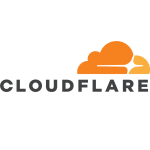What is most valuable?
The most valuable features we found are the SD-WAN, FortiGate SD-WAN, and the standard UTM protection, among others.
What needs improvement?
If someone doesn't have a certified or skilled technician/engineer, certain configurations, like setting up VLANs and SD-WANs, might not be difficult but can be simplified within FortiGate. The areas that might require more expertise are related to setting up VLANs and configuring SD-WANs, among others.
Therefore, the setup process could be made simpler.
For how long have I used the solution?
I've been working with FortiGate Next-Generation Firewall for three years. We are currently working with its latest version.
What do I think about the stability of the solution?
I would rate it as a nine. It is a stable solution.
What do I think about the scalability of the solution?
I would rate the scalability a five out of ten. It is not very scalable because scalability depends on the model. For instance, the FortiEdge, which is the entry-level model (the smallest model), supports up to about 15 users. Then the next model supports up to around 30 to 40 users, and the following one supports a hundred users. The price increases significantly with more users, which can be a concern.
If I make a guesstimate, I'd say about 20 to 30 of our clients, but they all have multiple branches. So, in total, we have about 200 FortiGate firewalls deployed for our customers, spread across 20 to 30 clients.
Most of our clients fall under the medium to enterprise category. We have clients from financial institutions and big corporate organizations. It's not an entry-level solution, as it might be challenging for small businesses to afford.
How are customer service and support?
Based on the support we receive from our supplier, who is a reseller or vendor of FortiGate, I would rate it at about six. Because it takes time to get support from the vendor. So it is not very fast.
How would you rate customer service and support?
How was the initial setup?
I rate my experience with the initial setup six on a scale of ten, where one is difficult and ten is easy. The initial setup of the solution is not difficult; if you have an engineer with certification and experience on other firewalls. For them, it's relatively easy. However, someone without certification and experience with other firewalls might find it a bit more challenging to grasp the FortiGate format and its platform layout.
FortiGate is primarily deployed on-premises. We also have a cloud option for certain referrals with tier-three engineers. We have it in our own data center in our cloud, and we also provide it to some of our customers. However, most of the ones I sell are for end customers, and they typically choose the hardware for on-site deployment.
What about the implementation team?
The duration of the deployment can vary depending on different factors. The timeline can involve various stages, such as ordering from overseas, ensuring stock availability, and finally, setting it up for a specific project. As such, the duration can differ based on these factors.
Eventually, once we have the stock, we can set up the firewall within about an hour.
What's my experience with pricing, setup cost, and licensing?
I would rate the pricing in the middle, around five out of ten. It also depends on how you sell it. If you want to sell it as a one-time purchase, then I'd put it at a seven. But if you amortize it, it can go down to a four because some customers prefer to pay it off over thirty-six months, as the licensing is for that duration.
There are additional costs to the standard license. While the standard licensing fees include UTM and a few other features, for additional features like FortiAnalyzer, FortiManager, and other PCs that you might need, there are additional costs. For features like FortiManager and FortiAnalyzer, the additional costs do add up. So, while getting the entry-level firewall with basic UTM protection and web filtering is not too bad if you want to add features like analyzer reporting, cloud managers, and FortiManager, the costs can become significantly higher.
What other advice do I have?
Overall, I rate the solution an eight out of ten.
Disclosure: My company has a business relationship with this vendor other than being a customer. Reseller





















